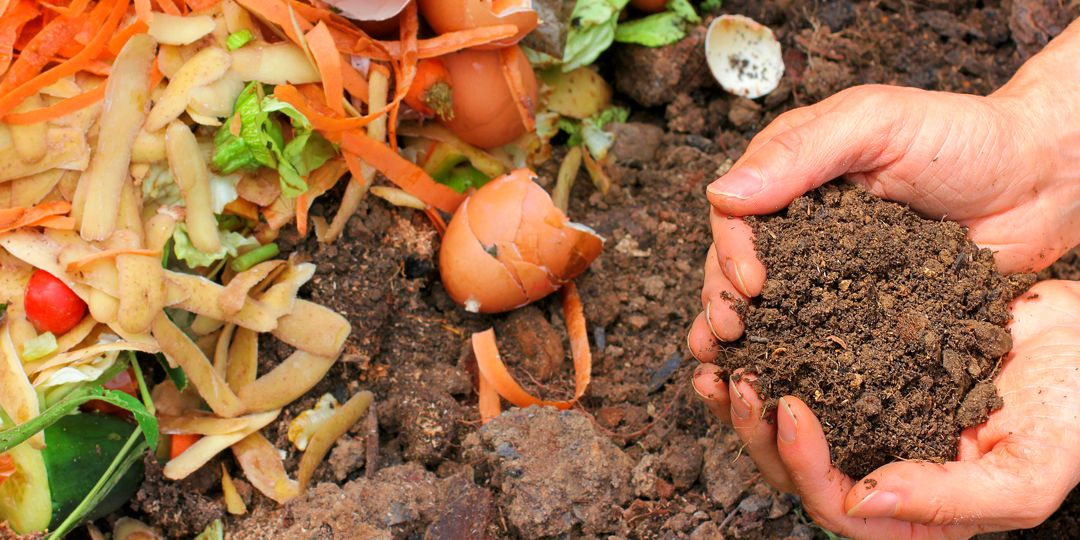
At Tucson Village Farm (TVF), we often get folks from the public who are on a walk or otherwise exploring the many gardens here at the Pima County Cooperative Extension office. We’ll be in our vegetable plots, prepping a row, watering starts, or pulling weeds, and they’ll approach with gardening questions. What are the best varieties of tomatoes to plant? Why aren’t my green beans flowering? Where do you get your compost?
The question about compost is one that we get frequently. While there are a number of local producers of excellent compost — Tank’s Green Stuff and Arbico Organics come to mind — we love to encourage home gardeners to start their own compost to provide their gardens with rich, healthy, moisture-retaining soil.
Composting is also a great way to remove trash from the waste stream. The EPA estimates that in 2018, only 4.1 percent of food waste was composted. The rest of that most likely ended up in the landfill. Not only can homeowners use many of their kitchen scraps to produce organic matter for their garden, but much of their landscape waste can go into the compost heap instead of the garbage can. A combination of the two and a bit of care and attention will yield rich, loamy soil after just a few months.
The key to successful composting is a correct ration of material rich in Nitrogen (N) and Carbon (C). Without getting too far into the weeds with it, any plant-based material that will go into a compost pile will have a certain carbon-to-nitrogen ratio (C/N) by weight. Ideally, your compost pile (when all materials are combined) should have a C/N of about 30:1. When that ratio is approached, the microbes and other decomposers living in and around your compost will have the fuel that they need in order to break down and metabolize the material and turn it into rich soil.
Getting the ratio right may sound intimidating. Fortunately there’s an easy shorthand to avoid finding the C/N of each material that you’re using in your compost. Instead of Carbons and Nitrogens, you can think about the two categories as Greens and Browns. Greens are the N and Browns are the C, and usually you can determine which category your material falls into by a simple color check.
Greens are usually fresher materials that haven’t broken down at all yet, as well as organic material from your kitchen (but no meat, bones or oils). These materials will provide the N for your pile. Browns are more Carbon-rich — materials like old stalks of plants, dry fallen leaves, or sawdust. Using this rudimentary shorthand, if you combine roughly 50 percent Browns with 50 percent Greens, the variable C/N ratio of each of the materials that make up your mix will get your pile pretty close to a 30:1 C/N ratio.
The pile can take on many different forms. Larger scale composters will often layer Greens and Browns in a long windrow, a bit like a lasagna. But if your space is limited, a simple pile will suffice. Maintaining the pile is as simple as turning — or mixing — the pile using a pitchfork or shovel about once a week and keeping the moisture level appropriate. If a handful of the compost is pulled from within the pile, it should feel like a wrung-out sponge. Getting the pile to such a level here in the Sonoran Desert requires a bit more attention than it would in more temperate climates, but the moisture retention capacity of the finished compost makes the effort worthwhile.
You’ll know that your compost pile is ready when most of the material has fully broken down and the pile looks and smells like rich soil. Depending upon the size of your pile, this should take only a month or two. Once your pile has grown to an adequate volume (1-2 cubic yards for a home composter), the pile should be left to rest, watered and turned until it has completed the composting process. It’s often helpful to have a second compost pile that scraps can be discarded into while the original pile is left to rest.
Creating a compost pile is a truly sustainable way to give your garden some extra juice while removing organic matter from the waste stream. Before you break ground on your garden, break your kitchen and yard scraps out of the waste stream!
 Thom Plasse is an Instructional Specialist, Senior with Tucson Village Farm. Over nearly a decade with TVF, he has run day camps, installed irrigation, written curriculum, dug dozens of fence post holes, and built chicken coops — among just a few other things.
Thom Plasse is an Instructional Specialist, Senior with Tucson Village Farm. Over nearly a decade with TVF, he has run day camps, installed irrigation, written curriculum, dug dozens of fence post holes, and built chicken coops — among just a few other things.